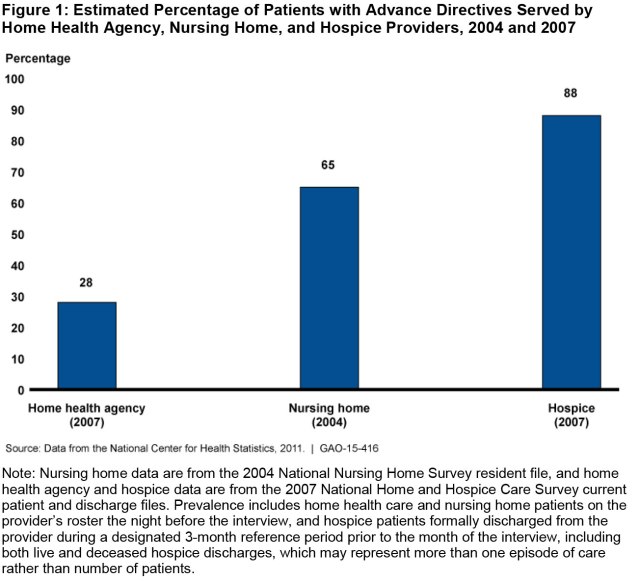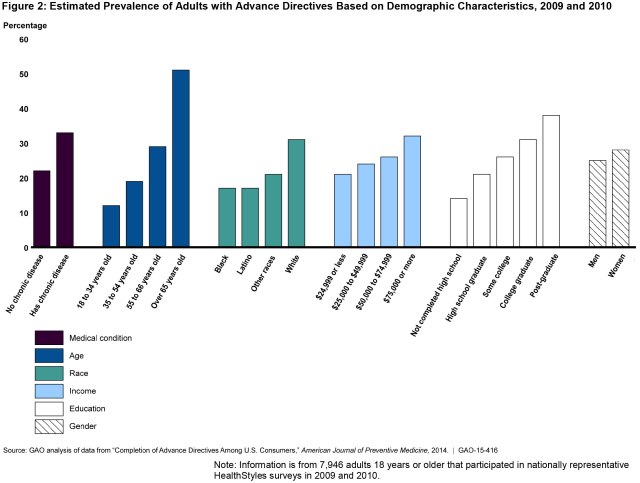Making the Difficult Decisions about End-of-Life Care
Planning for your future isn’t just about saving for retirement. Thinking ahead about end-of-life care, uncomfortable as it may be, can help avoid difficult situations later—for both you and your loved ones. For example, if you’re incapacitated, do you want all available medical treatment or do you want to forgo certain life-sustaining procedures?
Living wills and other types of advance directives describe how you want medical decisions to be made for you if you’re unable to make them yourself. But how many of us have these documents? Today’s WatchBlog shares what we found when we looked at advance directives.
Most of us don’t have a plan
More than half of adults in the United States don’t have advance directives, according to a 2013 Institute of Medicine study. However, a person’s medical condition bears heavily on that. For example, nearly 90 percent of people in hospice—those who by definition are close to the end of life—have made plans.
 (Excerpted from GAO-15-416)
(Excerpted from GAO-15-416)
The likelihood of having an advance directive also varies by age, race, income, education, and gender.
 (Excerpted from GAO-15-416)
(Excerpted from GAO-15-416)
A difficult discussion
Federal law requires Medicare- and Medicaid-funded hospitals, nursing homes, hospices, and certain other health care providers to have policies about how they will give adult patients written information on their right to an advance directive. The law also requires these providers to maintain policies about how they will document in a person’s medical record whether or not he or she has an advance directive. Both activities are typically done by hospital or other health care staff when they admit or enroll a patient.
However, those discussions are not easy to have. They can be complicated by
- discomfort discussing end-of-life issues, even when a patient is close to the end of life
- confusion about which staff should talk with the patient
- not enough time to have that talk
- lack of understanding about the costs or medical information needed
- language barriers
- fear that advance directives will block access to certain care.
Even without these complications, health care providers may not properly document the conversations they do have with patients, which can lead to errors in patients’ medical records—and ultimately errors in end-of-life care.
Despite these hurdles, we found some things that can help. For example, patients that receive information related to their specific medical condition can better understand and communicate their end-of-life preferences. Our full report contains all the leading practices we identified.
- Comments on GAO’s WatchBlog? Contact blog@gao.gov.
GAO Contacts
Related Products

GAO's mission is to provide Congress with fact-based, nonpartisan information that can help improve federal government performance and ensure accountability for the benefit of the American people. GAO launched its WatchBlog in January, 2014, as part of its continuing effort to reach its audiences—Congress and the American people—where they are currently looking for information.
The blog format allows GAO to provide a little more context about its work than it can offer on its other social media platforms. Posts will tie GAO work to current events and the news; show how GAO’s work is affecting agencies or legislation; highlight reports, testimonies, and issue areas where GAO does work; and provide information about GAO itself, among other things.
Please send any feedback on GAO's WatchBlog to blog@gao.gov.




